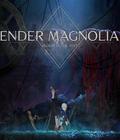
Genre: Fighting
Publisher: Capcom
Developer: Capcom
Release Date: June 13, 2006
 These are uncertain times we live in, folks: gas prices fluctuate daily (and never in the way consumers want them to), North Korea has missiles that can reach across the ocean and hit our east coast, and from what I’ve heard from Al Gore, global warming seems to be a bit worrisome as well. Luckily, though, there are still plenty of constants that we can go to for comfort, and Capcom releasing a collection of their classic games in one tidy little package is definitely one of them. Street Fighter Alpha Anthology brings together every title from this pseudo-sequel series and throws in an extra little game for novelty’s sake.
These are uncertain times we live in, folks: gas prices fluctuate daily (and never in the way consumers want them to), North Korea has missiles that can reach across the ocean and hit our east coast, and from what I’ve heard from Al Gore, global warming seems to be a bit worrisome as well. Luckily, though, there are still plenty of constants that we can go to for comfort, and Capcom releasing a collection of their classic games in one tidy little package is definitely one of them. Street Fighter Alpha Anthology brings together every title from this pseudo-sequel series and throws in an extra little game for novelty’s sake.
Of all of the games in Anthology, the original Alpha has the least gracefully of the bunch. The character models in the series have more of an anime flavor than those in Street Fighter II: characters such as Sagat and M. Bison are even more ridiculously muscular than they were before while Ken and Ryu are wide-eyed youths (which has just as much to do with the fact that the Alpha series occurs prior to Street Fighter II in the Street Fighter timeline). Aside from the world warrior’s more pronounced art style, they animate very fluidly, each with their own distinct style and personality. Each stage, however, is pretty drab and lifeless, in comparison to even Street Fighter II. It seems that for the returning characters, Capcom wanted to keep parts of their respective stages from that game to give the game a sense of familiarity. Unfortunately, that seems that’s all they are: the parts. Lacking detail, character, and color, these stages are mere shells of their former selves. The fact that Alpha’s music comes across as extremely low-fi and forgettable doesn’t help matters. Beneath all of the aesthetics, though, lays an extremely solid fighting engine that stands the test of time even against the likes of the Guilty Gear series and Street Fighter III.
Alpha 2 is really when the series hit it’s high point, refining what Alpha had already laid in place while introducing a few new characters (including Final Fight boss Rolento and Ryu-wannabe Sakura) and the custom combo system. The stages have been redone completely, each one looking leaps and bounds better than anything in Alpha. The music is slightly improved, but never quite reaches the level of Street Fighter II or Super Street Fighter II. The custom combo system is a welcome addition to the fighting engine, allowing for a quick momentum shift in the hands of a skilled player. When your super combo gauge reaches level one or higher, a custom combo can be activate by pressing any two kick buttons in conjunction with any punch or with any two punch buttons and one kick. At this point, a time gauge will appear letting you know how long you have to whale on your opponent. The idea with the custom combo is that you leave shadow images of your character that perform the same move you just entered slightly after you really performed it, allowing you to chain together more hits into a combo. Custom combos are easier to understand in practice than in writing, though, so if my description doesn’t quite do it for you, don’t get too discouraged.
Alpha Anthology also includes Alpha 2 Gold for all it’s worth. There are a few balance issues and other minute technical details addressed in this iteration, but aside from that and the addition of a few additional hidden characters, only the truly hardcore fans of the series will be able to tell any sort of difference between this and the garden-variety Alpha 2.
As dull as it’s going to sound to go through the paces again, Alpha 3 adds yet more characters to the mix, including Street Fighter vets Blanka, E. Honda, Vega, and Balrog. It also has the most radically different presentation of the trilogy, with the scrolling text that pops up during the results from each round and comes complete with an overexcited announcer (who instead of just saying the typical “Round 1! Fight!” opts for an enthusiastic “Go for broke!”). The biggest change to the gameplay is the “ism” system that makes you choose what options you’ll have available to you while fighting. Choosing A-Ism will provide for an experience that is the most similar to Alpha and Alpha 2, as you’ll have a three level super combo bar and can perform the ubiquitous Alpha counters. V-Ism is the only choice if you fancy custom combos, which can be performed when the super combo gauge is at least fifty percent full. Finally, X-Ism harkens back to a simpler time when super combo bars only had one level and didn’t come with all these fancy counters and custom combos, not to mention having to walk fifteen miles in the snow, uphill both ways (please excuse my frail attempts at humor…)! The “ism” system may have it’s proponents, but in Alpha 2 all of these options are available at once, making for a more open and well-rounded package.
The final game contained in Alpha Anthology isn’t an Alpha game at all. In fact, Super Gem Fighter Mini Mix is about as far from a traditional Street Fighter game as one could hope to get: super-deformed (as in huge heads, little bodies) character models, a very simple control scheme, and a much wackier tone help make this the odd duck of the compilation. Gem Fighter contains twelve fighters total: 8 from the Street Fighter series, 3 from Darkstalkers, and one from Red Earth (Tessa the witch). Since the controls are considerably watered down (you only get three attack buttons: punch, kick, and special), most of the fighting centers on collecting different colored gems (shocking!). See, each fighter has three special moves that can each be leveled up three times by collecting the appropriate colored gem. As the special moves level up, they get a little flashier and do more damage. The special button triggers a guard crush attack that literally knocks the gems out of your opponent for the taking. Gem Fighter is a very beginner-friendly game, as there are only three attack buttons and the commands for special moves appear on the gem meter that indicates what level they’re currently at and how close they are to leveling up.
Each of the five games in Alpha Anthology has the bare minimum of modes that fighting games can get by on: arcade, versus, and training. The Alpha trilogy also pack survival modes and “dramatic battle.” Survival of course pits you up against as many opponents as you can defeat with one health bar, but dramatic battle lets you and an AI-controlled partner fight the good fight with the more-than acceptable odds of two-on-one. If anything, this mode is way too easy, as each member of your two-fighter team has his or her own health bar against one opponent with a regular health bar, so you really only need to put a fraction of your usual effort in order to win a fight. Street Fighter Alpha Anthology also has the option of being copied to the PS2’s hard drive, but the game only has one short load screen to begin with, and that’s just when you select which game you want to play from the main menu, so it’s really not needed at all.
If you’re a devout Street Fighter fan, chances are you already picked Alpha Anthology up. Folks who are fans of the fighting genre in general can’t really go wrong either, especially with the $30 price tag. However, if you didn’t like the series to begin with, this won’t be the game to change your mind, as these are just arcade-perfect ports of a long-standing series from the heydays of the arcade.
Score: 7.0/10
























